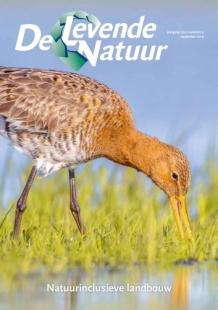De Levende Natuur nummer 4 van 2019 (English summary)
Thema
Afbeelding

From species protection to nature inclusive agriculture in large scale arable land in the Dutch province of Zeeland
C. Vreugdenhil & C. Jacobusse
During a five year farmland biodiversity project, stakeholders in and around a 500 ha farmland area cooperated in different ways to increase farmland biodiversity. This was done by implementing international knowledge on farm landbird conservation through Interreg PARTRIDGE. Intensive measures like flowerblocks and beetle banks were realised to safeguard and increase biodiversity. Together with the local absence of neonicotinoids, unsprayed wintering stubbles and smaller parcel size, this resulted in an local recolonization of skylarks and increase in partridges. This area approach was coordinated by a nature organisation owning farmland without a nature designation and utilising this to cooperate with conventional farmers. By giving farmers extra hectares, tailoured agreements could be made to implement measures and sustainable farming for biodiversity throughout their whole farm. This model is called the ‘multiplier effect’. This instrument was used to start experiments that focus mainly on bringing a small scale farming landscape back in a way that it can be farmed efficiently. This ‘strip farming for biodiversity’ has yielded in the first year more territories of farmland birds like skylark, yellow wagtail, lapwing, meadow pipit and oystercatcher, then the surrounding lands and the reference area.
Biodiversity in arable fields through crop diversity
W. Sukkel, F. Cuperus & D. van Apeldoorn
Modern western agriculture in arable farming, is done in increasingly large monocultures. Their advantage is the low labour input and costprice of the produce. However these monocultures are ecological deserts. Research shows that spatial crop diversity within farm fields can give higher yields, a lower disease pressure and a higher biodiversity. Combination of diverse cropping systems with reduced tillage shows potentially further advantages for biodiversity. Examples of these diverse cropping systems are strip cropping and agroforestry. Ongoing research in the Netherlands on strip cropping in arable and vegetable crops shows comparable yields, a lower pest and disease pressure and a higher biodiversity compared to monocultures. Testing and improving on a practical organic farms shows that strip cropping is practically feasible with a limited additional labour input.
Grass and grassland birds
M. Kuiper
In Amstelland populations of grassland birds, including Black tailed Godwit, are able to reproduce because the management of the grass by the local farmers on 25% of the area is focussed on the needs of the birds. The combination of intensively used land with a small part of grassland where the birds rule turns out to be effective both for the birds and for the incomes of the farmers. This success depends on the willingness of all participants to monitor what is happening and when and where necessary to adjust the management of the grasslands to actual developments. The economic aspects of this project are supported by the development of a local brand dairy products, ‘Boeren van Amstel’.
Nature based agriculture at Schiermonnikoog
J.W. Erisman
Schiermonnikoog is a very popular Wadden Sea island because of its landscape, nature and peaceful surroundings. The largest part of this island falls under National Park Schiermonnikoog, with plenty of nature, dunes, beach, forests, mudflats and polder. Agriculture on Schiermonnikoog makes a considerable contribution to the deterioration of the quality of nature areas as a result of the high nitrogen load. Nature based agriculture will help to change this by guiding the farmers to use functional agrobiodiversity in their farming practice to reach economically viable production levels in equilibrium with the requirements of the surrounding nature areas.

